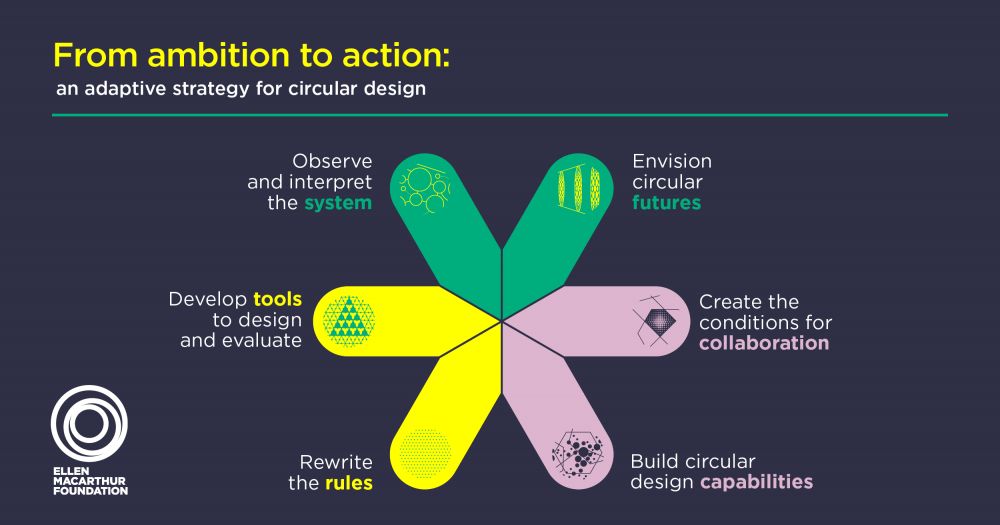News
The six levers designers can use to unlock the potential of circular design
23 Mar 2023
The Ellen MacArthur Foundation (EMF) has launched its first circular design strategy to support the transition to a circular economy. From ambition to action: an adaptive strategy for circular design offers tangible, practical actions that are adaptable to any type of organisation. Drawing on the experiences of circular design leaders, from a wide array of sectors and companies, it highlights the crucial role design plays in transitioning to a circular economy.
The strategy has identified six design leverage points, or focus areas, designers can harness to bring about circular economy transformation. These are:
- Observe and interpret the system
- Envision circular futures
- Create the conditions for collaboration
- Build circular design capabilities
- Rewrite the rules
- Develop tools to design and evaluate
One example of a tool included in the sixth category is Ganbatte. This is an online platform (developed by ICLEI - Local Governments for Sustainability, EMF, Metabolic, UNEP and Circle Economy) that provides city practitioners with data insights, knowledge, and tools to achieve their circular transition. The tool maps sector-focussed data sets to define a city’s current state of circularity, and offers an online library of ready-to-implement solutions and city-driven case studies to inform a circular pathway.
The full strategy with more examples from the six leverage points can be found on the EMF website. Although it is aimed at those leading circular design efforts, it’s a useful tool for anyone wishing to apply circular design to their work. As, Joe Iles, Design Programme Lead at EMF notes "There’s an urgent need to transition from our wasteful, linear economy to a regenerative, circular economy. Today, more people understand ‘why’ design is key to this transformation, but we’ve been lacking the full picture of ‘how’ designers can contribute. This adaptive strategy highlights tangible areas that designers of all disciplines can influence. It uses practical examples that can be customised and contextualised for different organisations and situations."
All news

